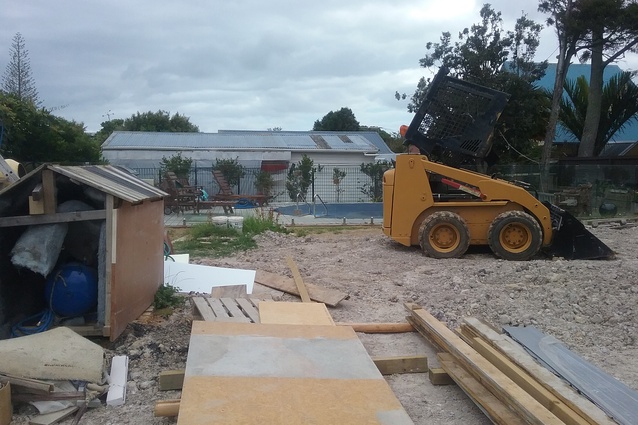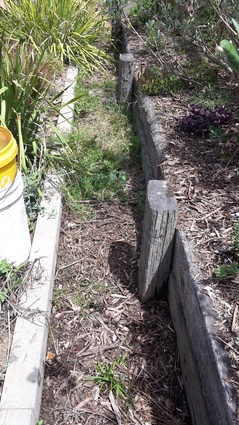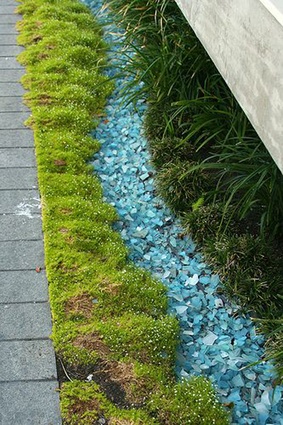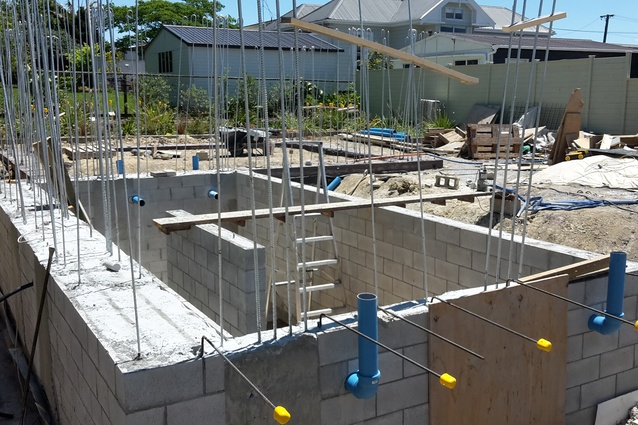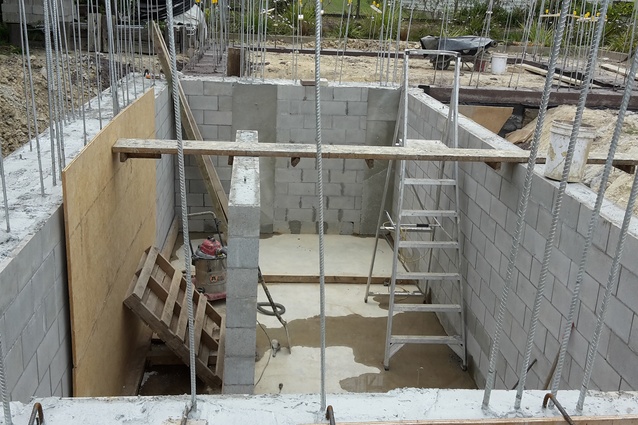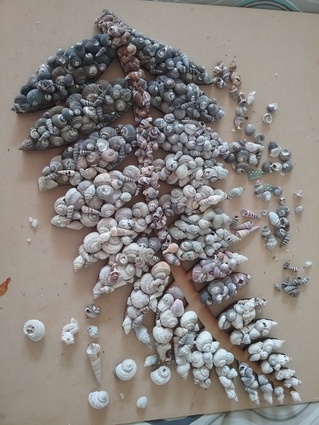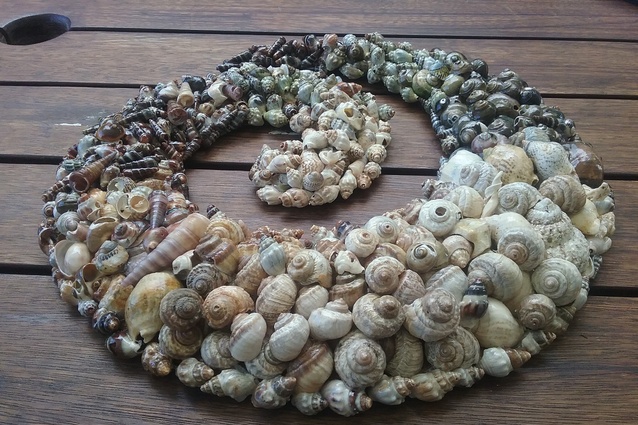The Living House: February edition
Rochelle Payne writes the fourth blog update on the progress of The Living House. The rammed earth house in Beachlands is to be the family home of the Paynes, who have decided to target the ‘trifecta’ of sustainability rating tools: Homestar, Passive House and Living Building Challenge.
It has been very slow going at the Living House. At the end of the last blog we stated that our aims were to have the following done by Christmas:
- The suspended timber basement roof on
- The hole around the basement backfilled (i.e. the big pile of dirt gone!)
- The MHU strip footings poured with concrete and ready for wall ramming to start in the new year.

We haven’t actually done too badly. The basement was backfilled on Boxing Day (much to the chagrin of our neighbour, who leaned over the fence to complain) and the strip footings were completed and poured by Christmas Day.
However, it is now the end of January and the roof is still not on the basement, although this piece of work is due to get started on very soon. The extreme delay in the roof of the basement was firstly due to the metal tray roofing option that we were going to use not meeting the requirements of the Red List (as detailed in the last blog).
We then went through a large process of trying to come up with another basement roof design option and ended up opting for a suspended timber floor to the basement (which is also the floor of the garage), as the timber detailing is much more straightforward then the concrete options and we feel like we will be able to manage it ourselves onsite.
We placed an order for Hyne beams from IBuilt and thought all systems were go, as the Hyne beams were Red List free and FSC. However, the Living Future Institute’s Living Building Challenge keeps throwing up challenges!
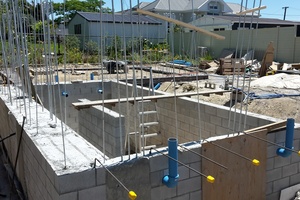
It turns out that the FSC certification for the Hyne beams is only for the forest where the pine is harvested and that the chain of custody is broken when that pine goes to the mill and glulam plant as they hold PEFC certification (which the LBC doesn’t recognise).
I only found this out when I was paying the invoice for the deposit for these timbers and noticed PEFC notated on the invoice, which cued immediate and frantic questions to IBuilt and Hyne Timber as well as an official dialogue post to the Living Building Challenge by our wonderful sustainability consultants The Building Excellence Group.
But then the Red List struck again! When originally researching whether we could use the Hyne beams, I found that they used a hardener that contains formaldehyde (CAS #50-00-0). For those of you that do not know, formaldehyde is on the Red List.
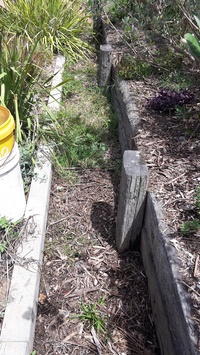
However, there was also an answer to an official dialogue question that said, “We understand that there are certain life-cycle and design benefits to using glulams over other available structural solutions (e.g. steel or concrete), despite the dependency on phenol resorcinol formaldehyde. Due to current market realities – there are no glulams made without formaldehyde available today – the product may be used. This exception only applies to glulams made using phenol formaldehyde; no glulam products made with urea formaldehyde are acceptable…”
I understood this that as long as the products didn’t contain urea formaldehyde then we could use them. However, after the issue with the PEFC I thought that perhaps I should really look into this a little further and I found that the official exemption states: “I10-E10 2/2008. Added phenol formeldehyde is allowed in composite structural members such as glulam beams. ”
Hmmm, not quite the same as my interpretations above. So it looked as though perhaps our preferred glulam beams had two issues that we needed to get resolved!
Thankfully, just before Christmas we received confirmation from the Living Future Institute that we could go ahead and use the Hyne beams because even though they were a mix of FSC and PEFC and contained formaldehyde, all other glulam beams on the market that have the strength that we require also contain this Red List substance.
In summary, we don’t have a roof on the basement for all of these reasons! However, the rendering on the basement walls is due to start this week by the wonderful Fisher Painting Services, who are going to be using the excellent Graphenstone paints. We are really excited about using this product that is new to the New Zealand market, as their paints absorb CO2.
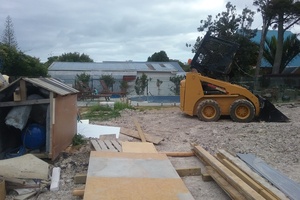
After the basement walls are rendered at the start of February (hopefully Waitangi weekend) then we will be putting on the timber roof structure and hopefully the roof will be fully ready in time for our Beer and Bangers basement warming party on 2 March!
In other news, our bobcat has been broken since November. There was a brief moment of joy when it got fixed and started working right before Christmas, however that didn’t last long. Joel ended up ordering a new pump for it from Peru, of all places, and we are now waiting for it to clear customs and get installed so the darned thing can start working again.
This is a problem because we need the bobcat (apparently) to drive the auger that mixes the earth for the rammed earth. Without the bobcat, our rammed earth mixes won’t be as strong, so we haven’t actually rammed anything for months, even though we have all our consents. Hopefully it will be fixed at the start of February so we can start ramming our walls straight away!

Off the back of our LBC biophilia workshop in November last year we have also been implementing some inspirational design changes on our site. We are very keen boaties and we also live right beside the beach in Beachlands. We have therefore decided to try and bring as much of our love of the ocean into our project as possible (without being too silly).
We are currently doing this in two ways. On each of our sailing adventures we have been collecting sea glass – as well as rubbish – from the beaches that we stop at. We are going to use the sea glass in a rain water swale that will help divert rainwater away from our evapotranspiration beds, using green, brown and clear sea glass as well as sea shells.
We’ve also been collecting shells and using them to create pieces of artwork that will be hung in the Living House. The artwork creation is consoling the author about the lack of progress on site!
Read the introduction to the Living House here, the second update here and the third post here.


